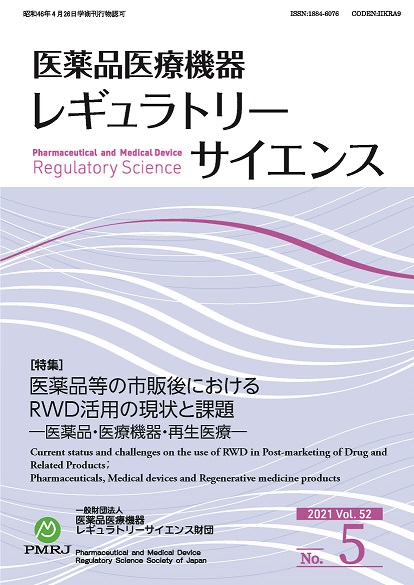Volume 52, Issue 5
Displaying 1-13 of 13 articles from this issue
- |<
- <
- 1
- >
- >|
-
2021Volume 52Issue 5 Pages 306-311
Published: June 10, 2021
Released on J-STAGE: June 24, 2022
Download PDF (1123K) -
2021Volume 52Issue 5 Pages 312-317
Published: June 10, 2021
Released on J-STAGE: June 24, 2022
Download PDF (376K) -
2021Volume 52Issue 5 Pages 318-324
Published: June 10, 2021
Released on J-STAGE: June 24, 2022
Download PDF (476K) -
2021Volume 52Issue 5 Pages 325-332
Published: June 10, 2021
Released on J-STAGE: June 24, 2022
Download PDF (1782K)
-
2021Volume 52Issue 5 Pages 333-340
Published: June 10, 2021
Released on J-STAGE: June 24, 2022
Download PDF (527K)
-
2021Volume 52Issue 5 Pages 341-342
Published: June 10, 2021
Released on J-STAGE: June 24, 2022
Download PDF (228K)
-
2021Volume 52Issue 5 Pages 343-344
Published: June 10, 2021
Released on J-STAGE: June 24, 2022
Download PDF (239K)
-
2021Volume 52Issue 5 Pages 345-356
Published: June 10, 2021
Released on J-STAGE: June 24, 2022
Download PDF (264K)
-
2021Volume 52Issue 5 Pages 347-357
Published: June 10, 2021
Released on J-STAGE: June 24, 2022
Download PDF (1258K)
-
2021Volume 52Issue 5 Pages 358-367
Published: June 10, 2021
Released on J-STAGE: June 24, 2022
Download PDF (873K) -
2021Volume 52Issue 5 Pages 368-377
Published: June 10, 2021
Released on J-STAGE: June 24, 2022
Download PDF (436K)
-
2021Volume 52Issue 5 Pages 378-387
Published: June 10, 2021
Released on J-STAGE: June 24, 2022
Download PDF (7951K)
-
2021Volume 52Issue 5 Pages 388-395
Published: June 10, 2021
Released on J-STAGE: June 24, 2022
Download PDF (1968K)
- |<
- <
- 1
- >
- >|
